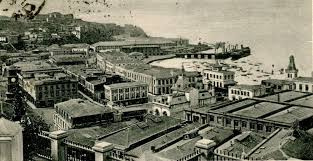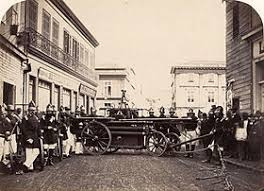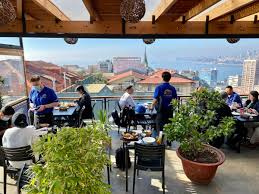What is the role of Valparaíso in Chilean history?

What is the role of Valparaíso in Chilean history?
What is the role of Valparaíso in Chilean history? Valparaíso, with its vibrant port, steep hills, and rich cultural scene, has been at the heart of Chile’s historical development for centuries.
As one of the oldest cities on the Chilean coast, it has played an essential role in the country’s economic, political, and cultural growth.
This unique city, known for its colorful architecture and bohemian spirit, has been central to shaping Chile’s identity. From the early days of Spanish colonization to its rise as an international port, Valparaíso’s importance extends well beyond its physical landscape.
Colonial Beginnings: 16th Century
The story of Valparaíso begins in the 16th century, during the early years of Spanish colonization in South America.
As the Spanish Empire sought to establish control over the Pacific coast, Valparaíso’s strategic location made it an ideal harbor for their ships.
In 1536, Diego de Almagro, the Spanish conquistador, was the first European to discover the bay of Valparaíso. However, it wasn’t until 1541 that the first permanent settlement was established in the area.
Despite being relatively small during the colonial period, the port’s geographical advantages ensured that Valparaíso remained vital for maritime trade between Spain’s American colonies.
This connection would lay the foundation for the city’s future prominence.
A Flourishing Port: 19th Century
Valparaíso’s transformation into a bustling port city began in the 19th century, particularly following Chile’s independence from Spain in 1818.
The region’s economic boom was driven by the demand for nitrate, copper, and other raw materials, which made Valparaíso the commercial heart of the country.
During this time, Valparaíso emerged as a key international port, attracting ships from across the world. British, French, and American traders made the city their base, and the harbor became one of the busiest in the Southern Hemisphere.
The city’s growth was also fueled by its unique positioning along the maritime routes connecting the Pacific to Europe and the United States.
This made Valparaíso a crucial stop for ships traveling between the Atlantic and Pacific Oceans.
Cultural Crossroads: Late 19th and Early 20th Century
By the late 19th century, Valparaíso had become a melting pot of cultures. The influx of European immigrants, sailors, and traders from all corners of the world gave the city a distinctive international flair.
This cosmopolitan atmosphere also led to a flourishing of the arts and intellectual life.
The city attracted writers, poets, and artists, many of whom were inspired by the city’s rugged beauty, chaotic streets, and vibrant waterfront.
Most notably, the poet Pablo Neruda, who later won the Nobel Prize in Literature, made Valparaíso the subject of many of his works.
The early 20th century saw Valparaíso grow into an intellectual and artistic hub. The city’s bohemian vibe became synonymous with its identity, attracting Chile’s most creative minds.
This period of cultural vibrancy would continue to influence the country’s literary and artistic traditions.
The Decline of the Port: Mid 20th Century
Although Valparaíso had been a leading port city, the mid-20th century saw a decline in its importance.
New technological advancements, such as larger ships, and the construction of more modern ports in nearby cities like San Antonio, began to reduce the flow of international trade through Valparaíso.
The city’s infrastructure, built during its 19th-century heyday, struggled to keep up with these new demands. As Chile’s economy became more centralized around Santiago, Valparaíso’s role as the primary maritime hub began to fade.
Despite this economic downturn, the city remained a crucial part of Chile’s history and culture. Its maritime roots continued to influence the people and the city’s identity, even as its role in global trade waned.
Political Significance: 20th Century
In the 20th century, Valparaíso also played a significant role in the country’s political history. The city was involved in key events such as the Chilean Civil War of 1891, where it became the site of battles between government forces and rebels.
During the Pinochet dictatorship (1973–1990), Valparaíso continued to be a center for political resistance and activism.
The city’s historical role as a meeting place for intellectuals and political leaders was amplified during this period. Many left-wing groups in Chile used Valparaíso as a base for organizing protests against the military regime.
Valparaíso’s political significance in this era also extended to its role in the maritime trade unions.
The port workers played a central role in organizing protests and strikes against the oppressive regime, which made the city a symbol of resistance to dictatorship.
Cultural Renaissance and World Heritage Status
In 2003, Valparaíso received international recognition when it was declared a UNESCO World Heritage Site.
This honor was given in recognition of the city’s historic architecture and unique urban planning, which reflect its rich cultural and historical significance.
The city’s steep hills, winding streets, colorful houses, and funiculars offer a glimpse into its vibrant past.
The declaration helped restore the city’s global prominence as a cultural destination and ensured the preservation of its iconic historic districts.
Today, Valparaíso’s cultural renaissance is evident in the thriving arts scene, with public murals, galleries, and cultural events throughout the year.
The city has become a beacon for artists, musicians, and travelers who are drawn to its eclectic charm and its deep-rooted maritime heritage.
Valparaíso as a Symbol of Chilean Identity
Beyond its economic and political history, Valparaíso has become a symbol of Chile’s identity. The city’s relationship with the sea has shaped the nation’s cultural narrative, especially as a port city with international connections.
Valparaíso’s history is intertwined with that of the entire nation. Its role as a thriving port helped shape Chile’s economy, while its vibrant artistic and intellectual scenes influenced the country’s culture.
The city has been a witness to both the triumphs and struggles of Chilean society, from its colonial origins to its modern-day significance as a cultural hub.
As a UNESCO World Heritage Site and a center for artistic expression, Valparaíso has cemented its place as a symbol of Chile’s resilience, creativity, and deep connection to the sea.
Valparaíso’s role in Chilean history
Valparaíso’s role in Chilean history is complex and multifaceted, shaped by its strategic position on the Pacific coast.
From its colonial beginnings to its rise as a global port city, Valparaíso has been central to the development of Chile’s economy, culture, and political life.
Though the city’s economic importance as a maritime hub has waned in the modern era, its cultural and historical legacy remains as strong as ever.
Today, Valparaíso stands as a living testament to Chile’s maritime heritage, its artistic spirit, and its ongoing connection to the sea.





Leave a Reply